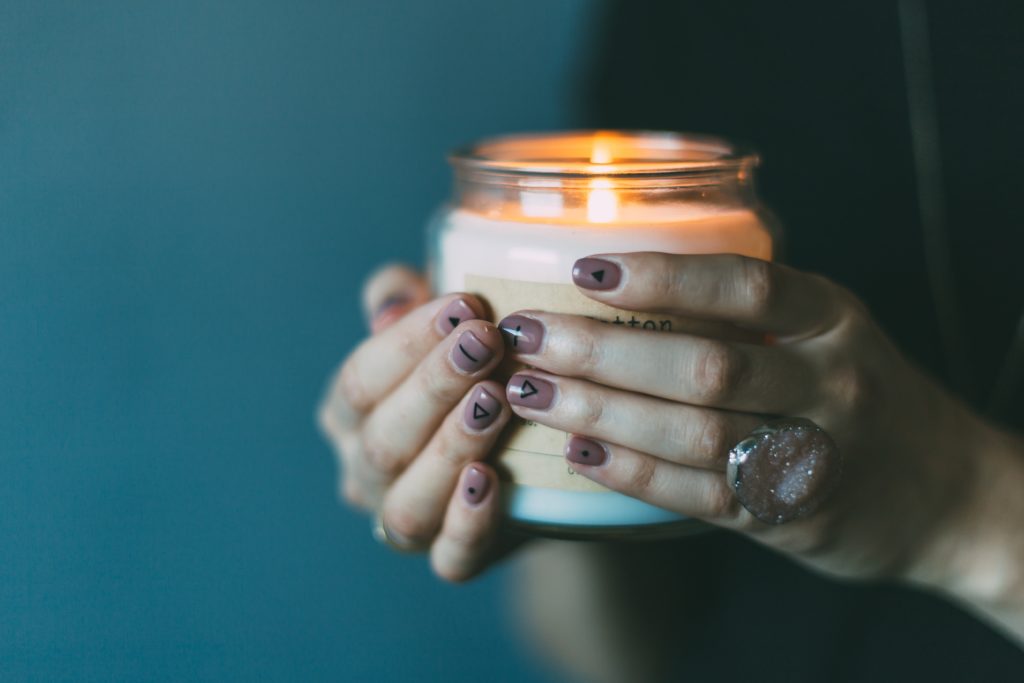
Photo by Daiga Ellaby on Unsplash
Ok, so if you’ve been reading my posts, then you know that what you put ON your body goes IN your body. And you also know that our skin doesn’t have the ability to metabolize and filter out those toxins like our digestive system does.
Yes, the majority of our everyday hygiene products are loaded with harmful carcinogens and toxins. And a big “no no” in this bunch is the inevitable ingredient listed as “fragrance.” Because “fragrance” falls under the trade secret category, this word can hide hundreds of harmful ingredients.
So it is imperative that you check ALL of your personal care and cosmetics products for both the ingredient “fragrance” and many others.
If you are curious about what other ingredients to watch out for and haven’t yet picked up my FREE guide, please download it by clicking the button below!
So how far does the toxins and carcinogens concern go? Do we really need to worry that everyday household products, that we never considered, can be toxic as well?
The answer is absolutely YES! The toxins don’t stop at food or personal care products. They absolutely affect our home, and maybe even office, as well, and candles, especially, can be a HUGE contributor to releasing carcinogens and toxins into our environment.
Let me say that I am a HUGE candle lover! I can never buy just one and I LOVE to shop around and smell the scent of as many as I can! So of course I was not happy when I first found out that candles are extremely high risk when it comes to releasing carcinogens and toxins into the air……..and it’s not just the fragrance that you have to watch out for.
If you are a candle lover like me, then definitely check out the list below to know what to avoid, and what to select when you are looking to buy your next candle (and make it a safe candle).
1. Avoid Paraffin Candles – Opt for Soy/Beeswax/Coconut Wax/Hemp Oil as a Safe Candle Wax Alternative
Paraffin wax is derived from petroleum, coal, or oil shale. It is made by removing the waxy substance from crude oil (the same stuff that makes our automobile gasoline AND the plastic we eat and drink out of) and is also a non-renewable resource.
Paraffin wax requires the addition of chemical amplifiers to enhance the scent throw of each candle.
On the other hand, soy, beeswax, coconut wax, and hemp oil are all renewable resources, making them environmentally friendly, AND they don’t contain any paraffin.
Soy is the most common of these and generally easier to come by than the other renewable materials. Most of the world’s soybeans are grown and harvested in the Midwest US. The oil is extracted from the flakes made after the soy beans have been harvested, cleaned, cracked and de-hauled.
Soy wax burns cleaner and results in less soot than paraffin. It is also an excellent carrier of fragrance without requiring the chemical amplifiers that paraffin candles require.
Paraffin wax does tend to be cheaper and more accessible, making it the most commonly used wax to make candles, but soy wax burns more slowly. So in the end paraffin candles may actually end up to be more expensive by forcing you to buy more frequently AND more toxic.
It’s important to note that if you opt for a renewable resource substance, the candles themselves should be made with 100% soy, beeswax, coconut wax, hemp oil, or some combination thereof which does not contain any paraffin in order to be a safe candle choice.
Also, from what I have found it is actually BEESWAX that is one of safest, if not the safest, options available. And there is even some suggestion that beeswax candles can be an effective treatment for allergies.
2. Avoid Lead Wicks – Opt for a Cotton or Paper Wick for a Safe Candle Alternative
Lead-core wicks release 5 times the amount of lead considered to be dangerous for children! And if it’s not safe for your kids then do you really want to take the chance on if it’s safe for you?
Though lead wicks have been banned since 2003, they may still be sold in dollar and discount stores. Plus, candles can last for years so it’s possible you could have an old lead wick candle laying around the house without realizing it.
To be sure you don’t have a lead wick candle, look for a “lead-free” label or statement when shopping for new candles (or checking your old candles if they still have the label).
For unburnt candles, rub the tip of the wick on a piece of paper and if it leaves a gray mark like a pencil, then the wick contains lead. For burnt candles, you will be able to see the lead core in the center, though you may need to peel back some of the cotton to find it.
I actually remember several of my old candles from years ago which had a lead core. I wish I would have known this then!
If it’s metal then toss it out!
3. Avoid Synthetic Fragrance and Dyes – Opt for Beeswax for a Safe Candle Fragrance
I’ve found some disputing evidence when it comes to this one. What is not disputed is that you should NEVER buy a candle that uses synthetic fragrance.
Some say that a candle scented with essential oils is ok. But others say that this also is not a good alternative due to the fact that the combustion changes the molecular structure of the essential oils, making them toxic as well.
In either case, opting for a candle scented by essential oils is going to be better than scented with a synthetic fragrance. However, if you are willing to spend a little extra money, then opt for a beeswax candle.
Not only is beeswax one of the safe materials, but it also requires NO added fragrance because the pollen and honey content of the wax offer a natural orange color and light, sweet fragrance.
I have not personally tried a beeswax candle myself, but I’m definitely game! Especially if it is helpful for allergies!
I was surprised at how much other information there is out there regarding candles so I may consider to expand upon this subject in a later post! What do you think? If that is something that would interest you then please drop me a comment below!
And don’t forget to check your, and your family’s, personal care products and makeup for toxins as well! Pick up my FREE guide by clicking the button below to help guide you in what you need to avoid!
I hope that you have found some value in the information about what to look for and what to avoid when selecting your next safe candle and will feel more confident in taking your first (or next) steps to achieving true wellness.
If you have found value, please share by clicking on the icons below this article so that I can help your friends and loved ones as well!
Until next time……..
Here’s to achieving true wellness!

P.S – What do you want to know about? Drop me a comment below and let me know what you’d like to learn more about to help you achieve true wellness!
*Legal Disclaimer – All information provided above is for educational purposes only. Information should not be construed as medical or legal advice in any capacity and is not intended to prevent, diagnose, treat, or cure disease.